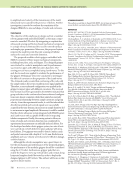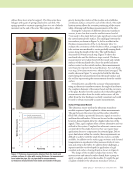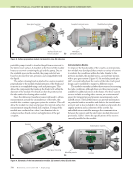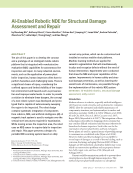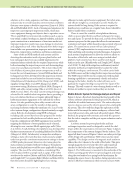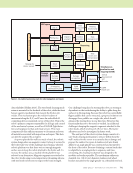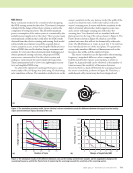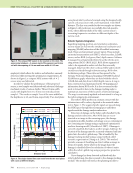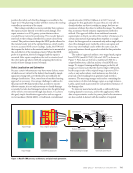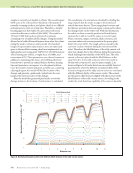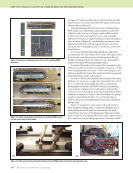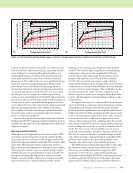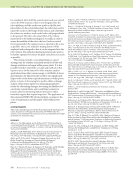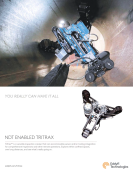738 M A T E R I A L S E V A L U A T I O N • J U L Y 2 0 2 1 Nayak, A., and S.K. Pradhan, 2014, “Design of a New In-Pipe Inspection Robot,” Procedia Engineering, Vol. 97, pp. 2081–2091, https://doi.org/10.1016/j.proeng.2014.12.451 Omori, H., T. Nakamura, and T. Yada, 2009, “An Underground Explorer Robot based on Peristaltic Crawling of Earthworms,” Industrial Robot, Vol. 36, No. 4, pp. 358–364, https://doi.org/10.1108 /01439910910957129 Park, S., H.D. Jeong, and Z.S. Lim, 2002, “Development of Mobile Robot Systems for Automatic Diagnosis of Boiler Tubes in Fossil Power Plants and Large Size Pipelines,” IEEE/RSJ International Conference on Intelligent Robots and Systems, Vol. 2, pp. 1880–1885, https://doi.org/10.1109 /IRDS.2002.1044030 Qiao, J., J. Shang, and A. Goldenberg, 2013, “Development of Inchworm In-Pipe Robot based on Self-Locking Mechanism,” IEEE/ASME Transac- tions on Mechatronics, Vol. 18, No. 2, pp. 799–806, https://doi.org/10.1109 /TMECH.2012.2184294 Shang, J., B. Bridge, T. Sattar, S. Mondal, and A. Brenner, 2008, “Development of a Climbing Robot for Inspection of Long Weld Lines,” Industrial Robot, Vol. 35, No. 3, pp. 217–223, https://doi.org/10.1108/01439910810868534 Tavakoli, M., C. Viegas, L. Marques, J.N. Pires, and A.T. de Almeida, 2013, “OmniClimbers: Omni-Directional Magnetic Wheeled Climbing Robots for Inspection of Ferromagnetic Structures,” Robotics and Autonomous Systems, Vol. 61, No. 9, pp. 997–1007, https://doi.org/10.1016 /j.robot.2013.05.005 Tesen, S., N. Saga, T. Satoh, and J. Nagase, 2013, “Peristaltic Crawling Robot for Use on the Ground and in Plumbing Pipes,” eds. V. Padois, P. Bidaud, O. Khatib, Romansy 19 – Robot Design, Dynamics and Control, CISM International Centre for Mechanical Sciences, Vol. 544, pp. 267–274, https://doi.org/10.1007/978-3-7091-1379-0_33 Yeo, H.-J., 2012, “Development of a Robot System for Repairing an Under- ground Pipe,” Journal of the Korea Academia-Industrial Cooperation Society, Vol. 13, No. 3, pp. 1270–1274 [in Korean], https://doi.org/10.5762/KAIS .2012.13.3.1270 ME TECHNICAL PAPER w robotic inspection of small-diameter superheater pipes
J U L Y 2 0 2 1 • M A T E R I A L S E V A L U A T I O N 739 ME TECHNICAL PAPER w A B S T R A C T The aim of this paper is to develop the concept and a prototype of an intelligent mobile robotic platform that is integrated with nondestructive evaluation (NDE) capabilities for autonomous live inspection and repair. In many industrial environ- ments, such as the application of power plant boiler inspection, human inspectors often have to perform hazardous and challenging tasks. There is a significant chance of injury, considering the confined spaces and limited visibility of the inspec- tion environment and hazards such as pressuriza- tion and improper water levels. In order to provide a solution to eliminate these dangers, the concept of a new robotic system was developed and proto- typed that is capable of autonomously sweeping the region to be inspected. The robot design contains systematic integration of components from robotics, NDE, and artificial intelligence (AI). A magnetic track system is used to navigate over the vertical steel structures required for examination. While moving across the inspection area, the robot uses an NDE sensor to acquire data for inspection and repair. This paper presents a design of a portable NDE scanning system based on eddy current array probes, which can be customized and installed on various mobile robot platforms. Machine learning methods are applied for semantic segmentation that will simultaneously localize and recognize defects without the need of human intervention. Experiments were conducted that show the NDE and repair capabilities of the system. Improvements in human safety and struc- tural damage prevention, as well as lowering the overall costs of maintenance, are possible through the implementation of this robotic NDE system. KEYWORDS: AI-enabled robotics, structural damage assessment, eddy current Introduction Modern advances in robotics, especially artificial intelligence (AI) based on neural networks, and nondestructive evaluation (NDE) allow for automated and reliable maintenance of components, structures, and systems subject to surface and subsurface anomalies (Gibb et al. 2018 Ullmann et al. 2020 Ali and Cha 2019 Zhu et al. 2019 Caccamo et al. 2017 Bogue 2010 Meyendorf et al. 2017). The integration of these technologies is favorable for designing robotic systems that may conduct difficult evaluation tasks that may otherwise be hazardous for human inspectors. Such is the case for the examination of power plant boilers and heat exchangers. Power plants are used as a general means of providing energy to consumers on a worldwide scale (Byers et al. 2018). However, boilers and heat exchangers are susceptible to several types of damages as a result of thermal cycling, such as corrosion, fracturing, and aging (Natesan 2002). If these damages are left unchecked, catastrophic failures may occur, which can cause serious problems such as property destruc- tion, hefty repair costs, and loss of life (Musyafa and Adiyagsa 2012). Current available examination methods to prevent these catastrophes are done through human inspection. This method of power plant health analysis is a suboptimal AI-Enabled Robotic NDE for Structural Damage Assessment and Repair by Xiaodong Shi*, Anthony Olvera†, Ciaron Hamilton*, Erzhuo Gao†, Jiaoyang Li*, Lucas Utke†, Andrew Petruska†, Zhenzhen Yu†, Lalita Udpa*, Yiming Deng‡, and Hao Zhang§ Materials Evaluation 79 (7): 739–751 https://doi.org/10.32548/2021.me-04214 ©2021 American Society for Nondestructive Testing * Nondestructive Evaluation Laboratory, Michigan State University, East Lansing, MI 48824, USA † Colorado School of Mines, Golden, CO 80401, USA ‡ Nondestructive Evaluation Laboratory, Michigan State University, East Lansing, MI 48824, USA dengyimi@egr.msu.edu § Colorado School of Mines, Golden, CO 80401, USA hzhang@mines.edu
ASNT grants non-exclusive, non-transferable license of this material to . All rights reserved. © ASNT 2025. To report unauthorized use, contact: customersupport@asnt.org















































































